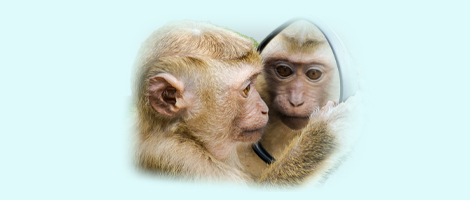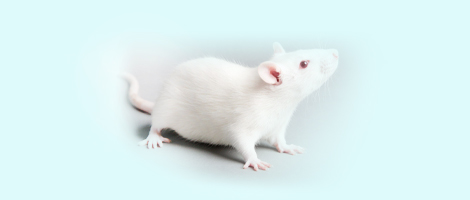













实验动物与比较医学 ›› 2025, Vol. 45 ›› Issue (2): 176-186.DOI: 10.12300/j.issn.1674-5817.2024.139
陈钰涵1, 陈瑾玲1, 李欣2,3, 区燕华2,3, 王斯1, 陈镜伊1, 王兴易1, 袁嘉丽1, 段媛媛2,3, 羊忠山1, 牛海涛1,2,3( )(
)( )
)
收稿日期:2024-09-23
修回日期:2024-12-31
出版日期:2025-04-25
发布日期:2025-04-25
通讯作者:
牛海涛(1970—),男,教授,博士生导师,研究方向:肠道微生态与机体免疫系统互作研究。E-mail: htniu@jnu.edu.cn。ORCID: 0000-0003-2210-2051作者简介:陈钰涵(1999—),女,硕士研究生,研究方向:肠道微生态与机体免疫系统互作研究以及抗肿瘤免疫微生态研究。E-mail: chenyu22900442@163.com
基金资助:
CHEN Yuhan1, CHEN Jinling1, LI Xin2,3, OU Yanhua2,3, WANG Si1, CHEN Jingyi1, WANG Xingyi1, YUAN Jiali1, DUAN Yuanyuan2,3, YANG Zhongshan1, NIU Haitao1,2,3( )(
)( )
)
Received:2024-09-23
Revised:2024-12-31
Published:2025-04-25
Online:2025-04-25
Contact:
NIU Haitao (ORCID: 0000-0003-2210-2051), E-mail: htniu@jnu.edu.cn摘要:
重症肌无力(myasthenia gravis,MG)是一种自身免疫性疾病,主要表现为骨骼肌无力,严重时可累及呼吸功能。目前,西医治疗MG以免疫抑制剂为主,但长期用药的不良反应显著;而中医治疗具有多靶点干预的优势。由于MG的发病机制尚未完全明确,因此建立契合中西医临床特征的动物模型对机制研究及新药开发至关重要。本文系统梳理了MG的中西医病因病机、诊断标准及动物模型研究进展。西医认为MG发病与遗传易感性、环境因素及自身抗体介导的突触后膜损伤密切相关;中医则将其归为“痿证”,病机为先天禀赋不足与后天失养。西医诊断需综合典型症状、疲劳试验、血清抗体检测及电生理检查;中医诊断则以主症结合次症及舌脉辨证分型。现有动物模型以实验性自身免疫性重症肌无力(experimental autoimmune myasthenia gravis,EAMG)和被动转移重症肌无力(passive transfer myasthenia gravis,PTMG)为主。其中,电鳐乙酰胆碱受体(acetylcholine receptor,AChR)诱导的EAMG模型与西医诊断标准吻合度较高,但中医次症吻合度不足;人工合成AChR多肽模型应用广泛,但中医证候吻合度低;肌肉特异性酪氨酸激酶(muscle-specific tyrosine kinase,MuSK)、低密度脂蛋白受体相关蛋白4(low density lipoprotein receptor associated protein 4,LRP4)诱导模型及转基因模型创新性强,但临床吻合度偏低。模型评估需结合行为学、电生理及免疫指标,而中医证候模型尚缺系统性构建。笔者认为,未来研究需融合中医病因学造模法与西医病理机制,构建病证结合模型,并建立基于“以方验证”的中医证候评价体系,结合新兴技术提升模型科学性与实用性。本文将为优化MG动物实验设计、推动中西医结合研究提供理论依据,也为中药复方疗效评价及机制探索奠定基础。
中图分类号:
陈钰涵,陈瑾玲,李欣,等. 基于中西医临床病证特点的重症肌无力动物模型分析[J]. 实验动物与比较医学, 2025, 45(2): 176-186. DOI: 10.12300/j.issn.1674-5817.2024.139.
CHEN Yuhan,CHEN Jinling,LI Xin,et al. Analysis of Animal Models of Myasthenia Gravis Based on Its Clinical Characteristics in Chinese and Western Medicine[J]. Laboratory Animal and Comparative Medicine, 2025, 45(2): 176-186. DOI: 10.12300/j.issn.1674-5817.2024.139.
序号 Number | 指标分类 Classification of indicators | 临床表现 Clinical manifestation |
|---|---|---|
| ① | 典型临床特征(20%) | 局部或全身肌群出现波动性疲劳无力,且在休息后稍有减轻 |
| ② | 临床试验(20%) | 让受累肌群进行持续活动后,肌肉无力症状加重即为疲劳试验阳性;冰敷受累肌群,肌无力症状明显减轻与改善即为冰敷试验阳性 |
| ③ | 药理学检查(15%) | 肌内注射胆碱酯酶抑制剂甲基硫酸新斯的明后,以改善最显著时的单项绝对分数计算相对评分,各单项相对评分有一项为阳性者,即为新斯的明试验阳性 |
| ④ | 电生理检查(15%) | 采用低频重复电刺激神经干,波幅衰减10%以上为阳性;单纤维肌电图测定“颤抖”研究神经-肌肉传递功能,“颤抖”增宽或阻滞为阳性 |
| ⑤ | 血清学抗体检测(15%) | 可以检测到AChR抗体阳性或者Titin抗体阳性,极少部分可以检测到MuSK抗体阳性或者LRP4抗体阳性 |
| ⑥ | 胸腺影像学检查(15%) | 胸腺CT提示胸腺增生或胸腺瘤 |
表1 重症肌无力西医诊断标准
Table 1 Western medical diagnostic criteria for myasthenia gravis
序号 Number | 指标分类 Classification of indicators | 临床表现 Clinical manifestation |
|---|---|---|
| ① | 典型临床特征(20%) | 局部或全身肌群出现波动性疲劳无力,且在休息后稍有减轻 |
| ② | 临床试验(20%) | 让受累肌群进行持续活动后,肌肉无力症状加重即为疲劳试验阳性;冰敷受累肌群,肌无力症状明显减轻与改善即为冰敷试验阳性 |
| ③ | 药理学检查(15%) | 肌内注射胆碱酯酶抑制剂甲基硫酸新斯的明后,以改善最显著时的单项绝对分数计算相对评分,各单项相对评分有一项为阳性者,即为新斯的明试验阳性 |
| ④ | 电生理检查(15%) | 采用低频重复电刺激神经干,波幅衰减10%以上为阳性;单纤维肌电图测定“颤抖”研究神经-肌肉传递功能,“颤抖”增宽或阻滞为阳性 |
| ⑤ | 血清学抗体检测(15%) | 可以检测到AChR抗体阳性或者Titin抗体阳性,极少部分可以检测到MuSK抗体阳性或者LRP4抗体阳性 |
| ⑥ | 胸腺影像学检查(15%) | 胸腺CT提示胸腺增生或胸腺瘤 |
辨证分型 Syndrome differentiation | 主证 Main syndrome | 次证 Secondary syndrome | 舌脉 Pulse and tongue |
|---|---|---|---|
脾胃气虚证 Spleen and stomach qi deficiency syndrome | ① 上胞下垂,视歧; ② 肢体痿软无力; ③ 言语謇涩、咀嚼和吞咽困难 | ① 神疲乏力; ② 胸闷气短; ③ 纳呆;④ 便溏或排便无力; ⑤ 面色萎黄; ⑥ 脘腹痞胀 | 舌淡、苔薄白、脉细弱 |
脾肾两虚证 Spleen and kidney deficiency syndrome | ① 上胞下垂; ② 四肢倦怠无力; ③ 吞咽困难,口齿不清 | 偏阴虚: ① 腰膝酸软; ② 自汗或盗汗; ③ 口干咽燥,五心烦热; ④ 纳差; ⑤ 小便色黄,大便干结。 偏阳虚: ① 腰膝酸软,腹部冷; ② 下利清谷; ③ 畏寒身冷; ④ 小便清长夜尿多,大便稀溏 | 偏阴虚:舌红,少苔,脉细数; 偏阳虚:舌质淡胖,苔淡胖,脉沉迟少力 |
肝肾亏虚证 Liver and kidney deficiency syndrome | ① 上胞下垂、复视或斜视或视物不清; ② 肌肉萎缩 | ① 五心烦热,目干涩,口干咽燥; ② 乏力; ③ 音喑; ④ 头晕、耳鸣; ⑤ 腰膝酸软; ⑥ 肌萎缩; ⑦ 遗精或月经不调 | 舌红、苔薄或无苔、脉细数 |
气血亏虚证 Qi and blood deficiency syndrome | ① 上胞下垂; ② 四肢软弱无力或全身无力,行动困难 | ① 面色无华; ② 神疲乏力; ③ 气短声低; ④ 心悸; ⑤ 自汗 | 舌淡、苔薄白、脉细弱 |
肺脾气虚证 Lung and spleen qi deficiency syndrome | ① 上胞下垂; ② 肢体痿软无力 | ① 咳嗽; ② 痰多; ③ 易感冒; ④ 自汗或盗汗 | 舌淡、苔白、脉细弱 |
瘀血阻络证 Blood-stasis obstruction syndrome | ①上胞下垂、复视或斜视; ②行动不便 | ① 眼球活动不灵; ② 畏光; ③ 消瘦 | 舌暗淡、苔少、脉弦细 |
大气下陷证 Pectoral qi collapse syndrome | ① 上胞下垂; ② 颈软头倾,全身无力; ③ 吞咽困难,构音困难; ④ 呼吸困难 | ① 喘脱; ② 汗出频频; ③ 咳痰无力或不能; ④ 唇甲发绀; ⑤ 重者不能平卧,甚至俯仰难合; ⑥ 精神烦躁; ⑦ 呼吸急促张口抬肩,危重期则呼吸微弱表浅;⑧ 意识障碍 | 舌质淡或暗,舌体胖大或有齿痕,苔薄白或少苔或黄厚腻,脉滑数或脉沉细或沉细尺弱 |
湿邪困脾证 Dampness traps the spleen syndrome | ① 上胞下垂,眼胞肿胀; ② 肢体倦怠无力困重 | ① 胸膈痞闷; ② 面晦纳垢; ③ 纳呆便溏 | 舌胖大,苔白腻,舌边有齿痕,脉濡缓或滑 |
表2 重症肌无力中医辨证分型
Table 2 Syndrome differentiation of myasthenia gravis in traditional Chinese medicine
辨证分型 Syndrome differentiation | 主证 Main syndrome | 次证 Secondary syndrome | 舌脉 Pulse and tongue |
|---|---|---|---|
脾胃气虚证 Spleen and stomach qi deficiency syndrome | ① 上胞下垂,视歧; ② 肢体痿软无力; ③ 言语謇涩、咀嚼和吞咽困难 | ① 神疲乏力; ② 胸闷气短; ③ 纳呆;④ 便溏或排便无力; ⑤ 面色萎黄; ⑥ 脘腹痞胀 | 舌淡、苔薄白、脉细弱 |
脾肾两虚证 Spleen and kidney deficiency syndrome | ① 上胞下垂; ② 四肢倦怠无力; ③ 吞咽困难,口齿不清 | 偏阴虚: ① 腰膝酸软; ② 自汗或盗汗; ③ 口干咽燥,五心烦热; ④ 纳差; ⑤ 小便色黄,大便干结。 偏阳虚: ① 腰膝酸软,腹部冷; ② 下利清谷; ③ 畏寒身冷; ④ 小便清长夜尿多,大便稀溏 | 偏阴虚:舌红,少苔,脉细数; 偏阳虚:舌质淡胖,苔淡胖,脉沉迟少力 |
肝肾亏虚证 Liver and kidney deficiency syndrome | ① 上胞下垂、复视或斜视或视物不清; ② 肌肉萎缩 | ① 五心烦热,目干涩,口干咽燥; ② 乏力; ③ 音喑; ④ 头晕、耳鸣; ⑤ 腰膝酸软; ⑥ 肌萎缩; ⑦ 遗精或月经不调 | 舌红、苔薄或无苔、脉细数 |
气血亏虚证 Qi and blood deficiency syndrome | ① 上胞下垂; ② 四肢软弱无力或全身无力,行动困难 | ① 面色无华; ② 神疲乏力; ③ 气短声低; ④ 心悸; ⑤ 自汗 | 舌淡、苔薄白、脉细弱 |
肺脾气虚证 Lung and spleen qi deficiency syndrome | ① 上胞下垂; ② 肢体痿软无力 | ① 咳嗽; ② 痰多; ③ 易感冒; ④ 自汗或盗汗 | 舌淡、苔白、脉细弱 |
瘀血阻络证 Blood-stasis obstruction syndrome | ①上胞下垂、复视或斜视; ②行动不便 | ① 眼球活动不灵; ② 畏光; ③ 消瘦 | 舌暗淡、苔少、脉弦细 |
大气下陷证 Pectoral qi collapse syndrome | ① 上胞下垂; ② 颈软头倾,全身无力; ③ 吞咽困难,构音困难; ④ 呼吸困难 | ① 喘脱; ② 汗出频频; ③ 咳痰无力或不能; ④ 唇甲发绀; ⑤ 重者不能平卧,甚至俯仰难合; ⑥ 精神烦躁; ⑦ 呼吸急促张口抬肩,危重期则呼吸微弱表浅;⑧ 意识障碍 | 舌质淡或暗,舌体胖大或有齿痕,苔薄白或少苔或黄厚腻,脉滑数或脉沉细或沉细尺弱 |
湿邪困脾证 Dampness traps the spleen syndrome | ① 上胞下垂,眼胞肿胀; ② 肢体倦怠无力困重 | ① 胸膈痞闷; ② 面晦纳垢; ③ 纳呆便溏 | 舌胖大,苔白腻,舌边有齿痕,脉濡缓或滑 |
模型类型 Model types | 动物 Animal | 造模方法及原理 Modeling method and principle | 模型优缺点 Model advantages and disadvantages | 与临床病证特点的吻合度 Conformity with clinical disease characteristics |
|---|---|---|---|---|
电鳐AChR诱导的EAMG模型 AChR-induced EAMG model using the electric ray | Lewis大鼠 | 从电鳐的电器官分离纯化AChR后,与含有结核分枝杆菌的弗氏完全佐剂(Freund’s complete adjuvant,FCA)充分混合,在实验大鼠的足垫、腹部及背部皮下多点注射乳剂。用类似方法再行2~3次增强免疫[ | 优点为典型模型,成模率高,可行性强,与人类的发病进程相似度高[ 缺点为操作复杂、制备成本高、不易推广,同时成模后在选择合适干预治疗MG的时间窗方面存在困难[ | 符合西医的有①、 ②、③、④、⑤,吻 合度85%; 符合中医主证的有①、③、⑤; 符合中医次证的有⑥,总体吻合度50% |
人工合成AChR多肽构建的EAMG模型 Model of AChR-induced EAMG using synthetic AChR peptide | Lewis大鼠 | 将人工合成的肽段(一般常用肽段为α97~116以及α129~145肽段)与等量FCA充分混匀制成乳剂于大鼠手足垫多点注射,一个月后加强免疫一次[ | 优点为操作简单,方法简便,成本相对低,模型易于复制,成模率高,且该模型有利于MG发病机制和治疗药物的研究[ 缺点为实验周期较长、表现的肌无力症状较轻[ | 符合西医:的有①、②、③、④、⑤,吻合度85%; 符合中医主症的有①、③、⑤; 符合中医次症的有⑥,总体吻合度50% |
被动转移EAMG鼠血清中的AChR-Ab建立的PTMG模型 Model of PTMG by passive transfer of AChR-Ab in the serum of EAMG rats | Lewis大鼠 | 从EAMG大鼠血清中获得IgG,将抗体稀释于生理盐水后,注射到大鼠颈静脉中[ | 优点为成模率高,成模速度快,适合短期快速实验; 缺点为因为需要已成模的EAMG大鼠,因此不适合首次实验。而且该模型维持肌无力的症状时间短,不适合长期实验 | 符合西医的有①、③、④、⑤,吻合度65%; 符合中医主症的有 ①、③、⑤,吻合度 45% |
用MG患者血清及血清内成分建立PTMG模型 Model of PTMG with serum and intraserum components from MG patients | BALB/c 小鼠 | 收集未使用过激素治疗的AChR-Ab阳性和阴性的MG患者血液,分离血清后以每次0.8 mL注射小鼠,连续7 d,在初次注射血清后24 h后,再腹腔注射环磷酰胺300 mg/kg。通过使用该方法,使小鼠获得MG的病理特征 | 优点为造模时间短,制备成本低,制备方法简单,适合短期研究; 缺点为血清来源难以获得,患者存在异质性,模型结果评定以及实验标准化困难,同时血清中存在各种免疫蛋白及炎症介质,不能保证单因素影响 | 符合西医的有①、③、④、⑥,吻合度65%; 符合中医主症的有③、⑤; 符合中医次症的有⑤、⑥,总体吻合度40% |
利用杂交瘤细胞株制备单克隆抗体建立PTMG模型 Establishment of a PTMG model using hybridoma cell lines for the preparation of monoclonal antibodies | Lewis大鼠 | AChR单抗mAb35/mAbA7/mAbG10杂交瘤细胞株腹腔注射[ | 优点为建模时间短,发病率高,易于评估,适合进行短期研究 | 符合西医的有①、③、⑤,吻合度50%; 符合中医主症的有①、③、⑤,吻合度45% |
向实验动物脑室中注入MG患者AChR-Ab建立PTMG模型 Establishment of a PTMG model by injection of AChR-Ab from MG patients into the brain ventricles of experimental animals | SD大鼠 | 收集MG患者血清提取AChR-Ab,将其注入大鼠侧脑室,隔日重复,共3次。大约2周后建立CNS损害的大鼠模型[ | 优点为该模型的建立为阐明MG 中枢神经系统损害的机制提供依据; 缺点为操作复杂且难度高,同时对实验环境与条件要求严格 | 符合西医的有①、③、④、⑤,吻合度65%; 符合中医主症的有③; 符合中医次症的有⑥,总体吻合度20% |
通过MG患者胸腺组织移植建立PTMG模型 Establishment of a PTMG model by thymus tissue transplantation from MG patients | NOD/ SCID 小鼠 | 将 MG 患者的完整胸腺组织移植到严重联合免疫缺陷小鼠(NOD/SCID)小鼠肾被膜下[ | 优点为该方法为胸腺致敏机制打下基石; 缺点为胸腺细胞虽然参与了MG的发病过程,但不是MG唯一的致病因素 | 符合西医的有①、③、④、⑥,吻合度65%; 符合中医主症的有③; 符合中医次症的有⑥,总体吻合度20% |
通过移植MG患者外周淋巴细胞建立PTMG模型 Establishment of a PTMG model by transplantation of peripheral lymphocytes from MG patients | NOD/ SCID 小鼠 | 将MG患者血淋巴细胞进行腹腔注入NOD/SCID小鼠体内[ | 优点为CD4+T细胞在MG发病中的作用提供了依据 | 符合西医的有①、④、⑤,吻合度50%; 符合中医主症的有⑤; 符合中医次症的有⑥,总体吻合度20% |
MuSK诱导的EAMG模型 MuSK-induced EAMG model | C57BL/6J小鼠或Lewis大鼠 | 以大鼠MuSK基因编码序列为模板合成小鼠MuSK抗原,采取主动免疫法将小鼠MuSK与FCA混合制成抗原乳剂,通过尾静脉或腹腔注射入小鼠体内,28 d后重复注射一次[ | 缺点为MuSK抗体介导的MG的具体机制尚未完全明确,动物模型还处于研究阶段,且与AChR诱导的模型相比,发病率偏低且模型不成熟 | 符合西医的有①、③、④、⑤,吻合度65%; 符合中医主症的有①、③、⑤,总体吻合度45% |
重组人AChR建立EAMG模型 Recombinant human AChR modelling of EAMG | Lewis大鼠 | 将人工合成的人AChR α亚基1~210片段通过质粒转染的方法获得融合蛋白,并将其与等体积FCA制成乳剂,于大鼠肩背足垫等处多点注射[ | 优点为成模率高,免疫原充足,操作简便,成本低廉 | 符合西医的有①、③、⑤,吻合度50%; 符合中医主症的有①、③、⑤; 符合中医次症的有⑥,总体吻合度50% |
采用核酸疫苗建立EAMG模型 Modelling EAMG using nucleic acid vaccines | C57BL/6J小鼠[ | 核酸疫苗通过将克隆靶抗原编码的基因或DNA片段加入到如质粒、噬菌体等载体中去,然后向实验动物体内注入重组后的载体,而使得机体表达靶抗原基因,从而激活机体的免疫系统,产生相应的体液和细胞免疫。可以诱导小鼠的免疫系统识别并产生针对AChR的抗体,从而模拟MG的病理过程 | 优点为免疫原性好,可以产生较强的持久性免疫应答; 缺点为表现出的肌无力症状不严重,操作困难,同时该造模技术方法尚在探索和完善阶段 | 符合西医的有①、⑤,吻合度35%; 符合中医主症的有③,总体吻合度15% |
利用转基因小鼠神经肌肉接头局部产生的IFN-γ建立EAMG模型 Establishment of an EAMG model using locally produced IFN-γ in transgenic mice neuromuscular junction | BALB/c 小鼠 | 将鼠IFN-γ基因与调节性片段——鼠nAChRε基因融合,构建DNA质粒,植入小鼠卵母细胞,使新生小鼠在神经接头处表达该基因并产生IFN-γ[ | 优点为该模型为探索研究性模型,证明了MG的发病与IFN-γ有关,表现出的症状以及指标与人类MG相似度高; 缺点为典型性不足,操作复杂有难度 | 符合西医的有①、③、④、⑤,吻合度65%; 符合中医主症的有①、③、⑤; 符合中医次症的有⑤、⑥,总体吻合度55% |
利用人免疫球蛋白转基因小鼠构建EAMG模型 Construction of an EAMG model using human immunoglobulin transgenic mice | C57BL/6J小鼠 | 建立了表达人免疫球蛋白的转基因小鼠,并将由电鳐电器官提纯的AChR与FCA一起,于第0、3、5 周皮下注射该小鼠[ | 优点为该模型产生的抗体均为人源性抗体,在免疫学上更接近人MG; 缺点为成本高,操作难,模型尚未成熟 | 符合西医的有①、③、④、⑤,吻合度65%; 符合中医主症的有①、③、⑤; 符合中医次症的有⑤、⑥,总体吻合度55% |
LRP4诱导的EAMG模型 Model of LRP4-induced EAMG | C57BL/6小鼠 | 通过单体集聚蛋白与LRP4相互作用形成二元复合物,协同LRP4诱导的MG模型促进四聚体形成,从而影响运动神经元末梢释放集聚蛋白诱导的AChR聚集[ | 优点为该模型为研究探索性模型,为LRP4参与MG发病提供了依据; 缺点为成本高,模型稳定性不足 | 符合西医的有①、③、④,吻合度50%; 符合中医主症的有③,总体吻合度15% |
表3 常见重症肌无力动物模型中西医临床病证特点吻合度分析
Table 3 Analysis of the conformity between common animal models of myasthenia gravis and clinical symptoms in Chinese and Western medicine
模型类型 Model types | 动物 Animal | 造模方法及原理 Modeling method and principle | 模型优缺点 Model advantages and disadvantages | 与临床病证特点的吻合度 Conformity with clinical disease characteristics |
|---|---|---|---|---|
电鳐AChR诱导的EAMG模型 AChR-induced EAMG model using the electric ray | Lewis大鼠 | 从电鳐的电器官分离纯化AChR后,与含有结核分枝杆菌的弗氏完全佐剂(Freund’s complete adjuvant,FCA)充分混合,在实验大鼠的足垫、腹部及背部皮下多点注射乳剂。用类似方法再行2~3次增强免疫[ | 优点为典型模型,成模率高,可行性强,与人类的发病进程相似度高[ 缺点为操作复杂、制备成本高、不易推广,同时成模后在选择合适干预治疗MG的时间窗方面存在困难[ | 符合西医的有①、 ②、③、④、⑤,吻 合度85%; 符合中医主证的有①、③、⑤; 符合中医次证的有⑥,总体吻合度50% |
人工合成AChR多肽构建的EAMG模型 Model of AChR-induced EAMG using synthetic AChR peptide | Lewis大鼠 | 将人工合成的肽段(一般常用肽段为α97~116以及α129~145肽段)与等量FCA充分混匀制成乳剂于大鼠手足垫多点注射,一个月后加强免疫一次[ | 优点为操作简单,方法简便,成本相对低,模型易于复制,成模率高,且该模型有利于MG发病机制和治疗药物的研究[ 缺点为实验周期较长、表现的肌无力症状较轻[ | 符合西医:的有①、②、③、④、⑤,吻合度85%; 符合中医主症的有①、③、⑤; 符合中医次症的有⑥,总体吻合度50% |
被动转移EAMG鼠血清中的AChR-Ab建立的PTMG模型 Model of PTMG by passive transfer of AChR-Ab in the serum of EAMG rats | Lewis大鼠 | 从EAMG大鼠血清中获得IgG,将抗体稀释于生理盐水后,注射到大鼠颈静脉中[ | 优点为成模率高,成模速度快,适合短期快速实验; 缺点为因为需要已成模的EAMG大鼠,因此不适合首次实验。而且该模型维持肌无力的症状时间短,不适合长期实验 | 符合西医的有①、③、④、⑤,吻合度65%; 符合中医主症的有 ①、③、⑤,吻合度 45% |
用MG患者血清及血清内成分建立PTMG模型 Model of PTMG with serum and intraserum components from MG patients | BALB/c 小鼠 | 收集未使用过激素治疗的AChR-Ab阳性和阴性的MG患者血液,分离血清后以每次0.8 mL注射小鼠,连续7 d,在初次注射血清后24 h后,再腹腔注射环磷酰胺300 mg/kg。通过使用该方法,使小鼠获得MG的病理特征 | 优点为造模时间短,制备成本低,制备方法简单,适合短期研究; 缺点为血清来源难以获得,患者存在异质性,模型结果评定以及实验标准化困难,同时血清中存在各种免疫蛋白及炎症介质,不能保证单因素影响 | 符合西医的有①、③、④、⑥,吻合度65%; 符合中医主症的有③、⑤; 符合中医次症的有⑤、⑥,总体吻合度40% |
利用杂交瘤细胞株制备单克隆抗体建立PTMG模型 Establishment of a PTMG model using hybridoma cell lines for the preparation of monoclonal antibodies | Lewis大鼠 | AChR单抗mAb35/mAbA7/mAbG10杂交瘤细胞株腹腔注射[ | 优点为建模时间短,发病率高,易于评估,适合进行短期研究 | 符合西医的有①、③、⑤,吻合度50%; 符合中医主症的有①、③、⑤,吻合度45% |
向实验动物脑室中注入MG患者AChR-Ab建立PTMG模型 Establishment of a PTMG model by injection of AChR-Ab from MG patients into the brain ventricles of experimental animals | SD大鼠 | 收集MG患者血清提取AChR-Ab,将其注入大鼠侧脑室,隔日重复,共3次。大约2周后建立CNS损害的大鼠模型[ | 优点为该模型的建立为阐明MG 中枢神经系统损害的机制提供依据; 缺点为操作复杂且难度高,同时对实验环境与条件要求严格 | 符合西医的有①、③、④、⑤,吻合度65%; 符合中医主症的有③; 符合中医次症的有⑥,总体吻合度20% |
通过MG患者胸腺组织移植建立PTMG模型 Establishment of a PTMG model by thymus tissue transplantation from MG patients | NOD/ SCID 小鼠 | 将 MG 患者的完整胸腺组织移植到严重联合免疫缺陷小鼠(NOD/SCID)小鼠肾被膜下[ | 优点为该方法为胸腺致敏机制打下基石; 缺点为胸腺细胞虽然参与了MG的发病过程,但不是MG唯一的致病因素 | 符合西医的有①、③、④、⑥,吻合度65%; 符合中医主症的有③; 符合中医次症的有⑥,总体吻合度20% |
通过移植MG患者外周淋巴细胞建立PTMG模型 Establishment of a PTMG model by transplantation of peripheral lymphocytes from MG patients | NOD/ SCID 小鼠 | 将MG患者血淋巴细胞进行腹腔注入NOD/SCID小鼠体内[ | 优点为CD4+T细胞在MG发病中的作用提供了依据 | 符合西医的有①、④、⑤,吻合度50%; 符合中医主症的有⑤; 符合中医次症的有⑥,总体吻合度20% |
MuSK诱导的EAMG模型 MuSK-induced EAMG model | C57BL/6J小鼠或Lewis大鼠 | 以大鼠MuSK基因编码序列为模板合成小鼠MuSK抗原,采取主动免疫法将小鼠MuSK与FCA混合制成抗原乳剂,通过尾静脉或腹腔注射入小鼠体内,28 d后重复注射一次[ | 缺点为MuSK抗体介导的MG的具体机制尚未完全明确,动物模型还处于研究阶段,且与AChR诱导的模型相比,发病率偏低且模型不成熟 | 符合西医的有①、③、④、⑤,吻合度65%; 符合中医主症的有①、③、⑤,总体吻合度45% |
重组人AChR建立EAMG模型 Recombinant human AChR modelling of EAMG | Lewis大鼠 | 将人工合成的人AChR α亚基1~210片段通过质粒转染的方法获得融合蛋白,并将其与等体积FCA制成乳剂,于大鼠肩背足垫等处多点注射[ | 优点为成模率高,免疫原充足,操作简便,成本低廉 | 符合西医的有①、③、⑤,吻合度50%; 符合中医主症的有①、③、⑤; 符合中医次症的有⑥,总体吻合度50% |
采用核酸疫苗建立EAMG模型 Modelling EAMG using nucleic acid vaccines | C57BL/6J小鼠[ | 核酸疫苗通过将克隆靶抗原编码的基因或DNA片段加入到如质粒、噬菌体等载体中去,然后向实验动物体内注入重组后的载体,而使得机体表达靶抗原基因,从而激活机体的免疫系统,产生相应的体液和细胞免疫。可以诱导小鼠的免疫系统识别并产生针对AChR的抗体,从而模拟MG的病理过程 | 优点为免疫原性好,可以产生较强的持久性免疫应答; 缺点为表现出的肌无力症状不严重,操作困难,同时该造模技术方法尚在探索和完善阶段 | 符合西医的有①、⑤,吻合度35%; 符合中医主症的有③,总体吻合度15% |
利用转基因小鼠神经肌肉接头局部产生的IFN-γ建立EAMG模型 Establishment of an EAMG model using locally produced IFN-γ in transgenic mice neuromuscular junction | BALB/c 小鼠 | 将鼠IFN-γ基因与调节性片段——鼠nAChRε基因融合,构建DNA质粒,植入小鼠卵母细胞,使新生小鼠在神经接头处表达该基因并产生IFN-γ[ | 优点为该模型为探索研究性模型,证明了MG的发病与IFN-γ有关,表现出的症状以及指标与人类MG相似度高; 缺点为典型性不足,操作复杂有难度 | 符合西医的有①、③、④、⑤,吻合度65%; 符合中医主症的有①、③、⑤; 符合中医次症的有⑤、⑥,总体吻合度55% |
利用人免疫球蛋白转基因小鼠构建EAMG模型 Construction of an EAMG model using human immunoglobulin transgenic mice | C57BL/6J小鼠 | 建立了表达人免疫球蛋白的转基因小鼠,并将由电鳐电器官提纯的AChR与FCA一起,于第0、3、5 周皮下注射该小鼠[ | 优点为该模型产生的抗体均为人源性抗体,在免疫学上更接近人MG; 缺点为成本高,操作难,模型尚未成熟 | 符合西医的有①、③、④、⑤,吻合度65%; 符合中医主症的有①、③、⑤; 符合中医次症的有⑤、⑥,总体吻合度55% |
LRP4诱导的EAMG模型 Model of LRP4-induced EAMG | C57BL/6小鼠 | 通过单体集聚蛋白与LRP4相互作用形成二元复合物,协同LRP4诱导的MG模型促进四聚体形成,从而影响运动神经元末梢释放集聚蛋白诱导的AChR聚集[ | 优点为该模型为研究探索性模型,为LRP4参与MG发病提供了依据; 缺点为成本高,模型稳定性不足 | 符合西医的有①、③、④,吻合度50%; 符合中医主症的有③,总体吻合度15% |
| 1 | GILHUS N E, TZARTOS S, EVOLI A, et al. Myasthenia gravis[J]. Nat Rev Dis Primers, 2019, 5(1):30. DOI:10.1038/s41572-019-0079-y . |
| 2 | BUBUIOC A M, KUDEBAYEVA A, TURUSPEKOVA S, et al. The epidemiology of myasthenia gravis[J]. J Med Life, 2021, 14(1):7-16. DOI:10.25122/jml-2020-0145 . |
| 3 | VANOLI F, MANTEGAZZA R. Current drug treatment of myasthenia gravis[J]. Curr Opin Neurol, 2023, 36(5):410-415. DOI:10.1097/WCO.0000000000001196 . |
| 4 | 盛昭园, 陈建, 应汝炯, 等. 基于海派中医特色的重症肌无力一体化综合诊疗专家共识[J]. 上海中医药杂志, 2024, 58(S1):41-47. DOI: 10.16305/j.1007-1334.2024.08 . |
| SHENG Z Y, CHEN J, YING R J, et al. Integrated diagnosis and treatment expert consensus for myasthenia gravis based on characteristics of Shanghai style traditional Chinese medicine[J]. Shanghai J Tradit Chin Med, 2024, 58(S1):41-47. DOI: 10.16305/j.1007-1334.2024.08 . | |
| 5 | LIU X M, KUANG Y Y, BIAN C R, et al. Exploring the mechanism of action of herbal compounding in the treatment of myasthenia gravis based on network pharmacology[J]. Biotechnol Genet Eng Rev, 2024, 40(2):1164-1179. DOI:10.1080/02648725.2023.2193048 . |
| 6 | SANDERSON N S R. Complement and myasthenia gravis[J]. Mol Immunol, 2022, 151:11-18. DOI:10.1016/j.molimm. 2022.08.018 . |
| 7 | HONG Y, LIANG X, GILHUS N E. AChR antibodies show a complex interaction with human skeletal muscle cells in a transcriptomic study[J]. Sci Rep, 2020, 10(1):11230. DOI:10.1038/s41598-020-68185-x . |
| 8 | SUN S S, SHEN Y H, ZHANG X, et al. The MuSK agonist antibody protects the neuromuscular junction and extends the lifespan in C9orf72-ALS mice[J]. Mol Ther, 2024, 32(7):2176-2189. DOI:10.1016/j.ymthe.2024.05.016 . |
| 9 | 左瑞, 吕富荣, 王晓燕. 94例重症肌无力患者中医证型分析[J]. 新中医, 2020, 52(17):48-50. DOI: 10.13457/j.cnki.jncm.2020.17.014 . |
| ZUO R, LYU F R, WANG X Y. Analysis on Chinese medicine syndrome types of 94 cases of myasthenia gravis[J]. J New Chin Med, 2020, 52(17):48-50. DOI: 10.13457/j.cnki.jncm.2020.17.014 . | |
| 10 | 刘凡, 李国年, 罗贤毅, 等. 结合"年之所加"治疗重症肌无力经验[J]. 山东中医杂志, 2024, 43(7):760-764, 769. DOI: 10.16295/j.cnki.0257-358x.2024.07.018 . |
| LIU F, LI G N, LUO X Y, et al. Experience in treating myasthenia gravis combined with "influence of year's circuit Qi"[J]. Shandong J Tradit Chin Med, 2024, 43(7):760-764, 769. DOI: 10.16295/j.cnki.0257-358x.2024.07.018 . | |
| 11 | 张永德, 刘晓艳. 近十年重症肌无力的中医病因病机研究概况[J]. 长春中医药大学学报, 2019, 35(5):995-997. DOI: 10.13463/j.cnki.cczyy.2019.05.050 . |
| ZHANG Y D, LIU X Y. Overview of TCM etiology and pathogenesis of myasthenia gravis in recent ten years[J]. J Changchun Univ Chin Med, 2019, 35(5):995-997. DOI: 10.13463/j.cnki.cczyy.2019.05.050 . | |
| 12 | 王宝祥, 许俊杰, 陆霞, 等. 益气托邪汤联合温针灸治疗重症肌无力临床观察[J]. 新中医, 2018, 50(10):166-169. DOI: 10.13457/j.cnki.jncm.2018.10.048 . |
| WANG B X, XU J J, LU X, et al. Clinical observation on Yiqi Tuoxie Tang combined with warming needle moxibustion for myasthenia gravis[J]. J New Chin Med, 2018, 50(10):166-169. DOI: 10.13457/j.cnki.jncm.2018.10.048 . | |
| 13 | 曹璐璐, 王炳权, 陈朝远, 等. 李庆和教授运用化湿解毒法治疗重症肌无力经验探析[J]. 西部中医药, 2021, 34(1):34-36. DOI: 10.12174/j.issn.2096-9600.2021.01.09 . |
| CAO L L, WANG B Q, CHEN Z Y, et al. Professor Li Qinghe's experience in treating myasthenia gravis by dampness-resolving and detoxifying method[J]. West J Tradit Chin Med, 2021, 34(1):34-36. DOI: 10.12174/j.issn.2096-9600.2021.01.09 . | |
| 14 | 张会永, 冷锦红, 谢伟峰, 等. 张静生治疗重症肌无力临证经验与用药分析[J]. 中华中医药学刊, 2020, 38(12):27-30. DOI: 10.13193/j.issn.1673-7717.2020.12.006 . |
| ZHANG H Y, LENG J H, XIE W F, et al. Introduction of ZHANG jingsheng's academic thoughts and prescriptions of myasthenia gravis[J]. Chin Arch Tradit Chin Med, 2020, 38(12):27-30. DOI: 10.13193/j.issn.1673-7717.2020.12.006 . | |
| 15 | 常婷. 中国重症肌无力诊断和治疗指南(2020版)[J]. 中国神经免疫学和神经病学杂志, 2021, 28(1):1-12. DOI: 10.3969/j.issn.1006-2963.2021.01.001 . |
| CHANG T. Chinese guidelines for the diagnosis and treatment of myasthenia gravis(2020 version)[J]. Chin J Neuroimmunol Neurol, 2021, 28(1):1-12. DOI: 10.3969/j.issn.1006-2963.2021.01.001 . | |
| 16 | 中国免疫学会神经免疫学分会, 中华医学会神经病学分会神经免疫学组. 重症肌无力诊断和治疗中国专家共识[J]. 中国神经免疫学和神经病学杂志, 2012, 19(6):401-408. DOI: 10.3969/j.issn.1006-2963.2012.06.001 . |
| Chinese Society of Immunology Neuroimmunology Branch, Chinese Medical Association Neurology Branch Neuroimmunology Group. Chinese expert consensus on the diagnosis and treatment of myasthenia gravis[J].Chin J Neuroimmunol Neurol, 2012, 19(6):401-408. DOI: 10.3969/j.issn.1006-2963.2012.06.001 . | |
| 17 | 佚名. «中医内科常见病诊疗指南»发布[J]. 中华中医药杂志, 2008, 23(9):848. |
| Anon. Guidelines for diagnosis and treatment of common diseases in internal medicine of traditional Chinese medicine issued[J]. China J Tradit Chin Med Pharm, 2008, 23(9):848. | |
| 18 | 李广文, 庞松, 方雪, 等. 重症肌无力中医辨证分型研究[J]. 内蒙古中医药, 2016, 35(7):86-87. DOI: 10.16040/j.cnki.cn15-1101.2016.07.086 . |
| LI G W, PANG S, FANG X, et al. Study on dialectical differentiation of myasthenia gravis in traditional Chinese medicine[J]. Nei Mongol J Tradit Chin Med, 2016, 35(7):86-87. DOI: 10.16040/j.cnki.cn15-1101.2016.07.086 . | |
| 19 | 姚舜禹, 薛雅慧, 杜妙乔, 等. 重症肌无力的动物模型研究进展[J]. 国际神经病学神经外科学杂志, 2024, 51(1):79-85. DOI: 10.16636/j.cnki.jinn.1673-2642.2024.01.014 . |
| YAO S Y, XUE Y H, DU M Q, et al. Advances in the research on animal models for myasthenia gravis[J]. J Int Neurol Neurosurg, 2024, 51(1):79-85. DOI: 10.16636/j.cnki.jinn.1673-2642.2024.01.014 . | |
| 20 | JIAO W, HU F Y, LI J Q, et al. Qiangji Jianli Decoction promotes mitochondrial biogenesis in skeletal muscle of myasthenia gravis rats via AMPK/PGC-1α signaling pathway[J]. Biomed Pharmacother, 2020, 129:110482. DOI:10.1016/j.biopha.2020.110482 . |
| 21 | BORGES L S, RICHMAN D P. Muscle-specific kinase myasthenia gravis[J]. Front Immunol, 2020, 11:707. DOI:10.3389/fimmu.2020.00707 . |
| 22 | CHU Y Y, HE Y H, ZHAI W Z, et al. CpG adjuvant enhances humoral and cellular immunity against OVA in different degrees in BALB/c, C57BL/6J, and C57BL/6N mice[J]. Int Immunopharmacol, 2024, 138:112593. DOI:10.1016/j.intimp.2024.112593 . |
| 23 | BOGATIKOV E, LINDBLAD I, PUNGA T, et al. miR-1933-3p is upregulated in skeletal muscles of MuSK+ EAMG mice and affects Impa1 and Mrpl27[J]. Neurosci Res, 2020, 151:46-52. DOI:10.1016/j.neures.2019.02.003 . |
| 24 | WANG K C, XIE Y Y, CHEN X X, et al. The activation of muscarinic acetylcholine receptors protects against neuroinflammation in a mouse model through attenuating microglial inflammation[J]. Int J Mol Sci, 2024, 25(19):10432. DOI:10.3390/ijms251910432 . |
| 25 | DRESSER L, WLODARSKI R, REZANIA K, et al. Myasthenia gravis: epidemiology, pathophysiology and clinical manifestations[J]. J Clin Med, 2021, 10(11):2235. DOI:10.3390/jcm10112235 . |
| 26 | KUSNER L L, LE PANSE R, LOSEN M, et al. Animal models of myasthenia gravis for preclinical evaluation[M]//Myasthenia gravis and related disorders. Cham: Springer International Publishing, 2018:61-70. DOI:10.1007/978-3-319-73585-6_4 . |
| 27 | 徐添, 官磊瑶, 刘浪辉, 等. 基于数据挖掘的重症肌无力动物模型应用分析[J]. 江西中医药大学学报, 2023, 35(6):92-97. |
| XU T, GUAN L Y, LIU L H, et al. Application analysis of myasthenia gravis animal model based on data mining[J]. J Jiangxi Univ Chin Med, 2023, 35(6):92-97. | |
| 28 | HUA Y, JIANG P P, DAI C Y, et al. Extracellular vesicle autoantibodies[J]. J Autoimmun, 2024, 149:103322. DOI:10.1016/j.jaut.2024.103322 . |
| 29 | LAZARIDIS K, BALTATZIDI V, TRAKAS N, et al. Characterization of a reproducible rat EAMG model induced with various human acetylcholine receptor domains[J]. J Neuroimmunol, 2017, 303:13-21. DOI:10.1016/j.jneuroim. 2016.12.011 . |
| 30 | YU Z, ZHANG M Y, JING H Y, et al. Characterization of LRP4/agrin antibodies from a patient with myasthenia gravis[J]. Neurology, 2021, 97(10): e975-e987. DOI:10.1212/WNL. 0000000000012463 . |
| 31 | 唐毅华, 章正祥, 李净娅, 等. 重症肌无力模型的研究进展[J]. 浙江临床医学, 2018(11):1886-1888. |
| TANG Y H, ZHANG Z X, LI J Y, et al. Advances in modelling myasthenia gravis[J]. Zhejiang Clin Med J, 2018(11):1886-1888. | |
| 32 | KUSNER L L, LOSEN M, VINCENT A, et al. Guidelines for pre-clinical assessment of the acetylcholine receptor: specific passive transfer myasthenia gravis model-Recommendations for methods and experimental designs[J]. Exp Neurol, 2015, 270:3-10. DOI:10.1016/j.expneurol.2015.02.025 . |
| 33 | CRON M A, PAYET C A, FAYET O M, et al. Decreased expression of miR-29 family associated with autoimmune myasthenia gravis[J]. J Neuroinflammation, 2020, 17(1):294. DOI:10.1186/s12974-020-01958-3 . |
| 34 | GAO X L, WEN Y J, WANG Z, et al. Rapamycin alleviates the symptoms of experimental autoimmune myasthenia gravis rats by down-regulating Th17 cell/regulatory T cell ratio[J]. Xi Bao Yu Fen Zi Mian Yi Xue Za Zhi, 2021, 37(1):24-30. |
| 35 | FUCHS S, ARICHA R, REUVENI D, et al. Experimental autoimmune myasthenia gravis (EAMG): from immunochemical characterization to therapeutic approaches[J]. J Autoimmun, 2014, 54:51-59. DOI:10.1016/j.jaut.2014.06.003 . |
| 36 | THEISSEN L T, SCHROETER C B, HUNTEMANN N, et al. Recombinant acetylcholine receptor immunization induces a robust model of experimental autoimmune myasthenia gravis in mice[J]. Cells, 2024, 13(6):508. DOI:10.3390/cells13060508 . |
| 37 | LI X L, LI H, ZHANG M, et al. Correction to: Exosomes derived from atorvastatin-modified bone marrow dendritic cells ameliorate experimental autoimmune myasthenia gravis by up-regulated levels of IDO/Treg and partly dependent on FasL/Fas pathway[J]. J Neuroinflammation, 2019, 16(1):119. DOI:10.1186/s12974-019-1503-7 . |
| 38 | MANTEGAZZA R, CORDIGLIERI C, CONSONNI A, et al. Animal models of myasthenia gravis: utility and limitations[J]. Int J Gen Med, 2016, 9:53-64. DOI:10.2147/IJGM.S88552 . |
| 39 | ALABBAD S, ALGAEED M, SIKORSKI P, et al. Monoclonal antibody-based therapies for myasthenia gravis[J]. BioDrugs, 2020, 34(5):557-566. DOI:10.1007/s40259-020-00443-w . |
| 40 | NORIDOMI K, WATANABE G, HANSEN M N, et al. Structural insights into the molecular mechanisms of myasthenia gravis and their therapeutic implications[J]. eLife, 2017, 6: e23043. DOI:10.7554/eLife.23043 . |
| 41 | ITO R, TAKAHASHI T, KATANO I, et al. Current advances in humanized mouse models[J]. Cell Mol Immunol, 2012, 9(3):208-214. DOI:10.1038/cmi.2012.2 . |
| 42 | CHHATTA A, MIKKERS H M M, STAAL F J T. Strategies for Thymus regeneration and generating thymic organoids[J]. J Immunol Regen Med, 2021, 14: 100052. DOI:10.1016/j.regen.2021.100052 . |
| 43 | BRISSOT E, LABOPIN M, LABUSSIÈRE H, et al. Post-transplant cyclophosphamide versus anti-thymocyte globulin after reduced intensity peripheral blood allogeneic cell transplantation in recipients of matched sibling or 10/10 HLA matched unrelated donors: final analysis of a randomized, open-label, multicenter, phase 2 trial[J]. Blood Cancer J, 2024, 14(1):31. DOI:10.1038/s41408-024-00990-3 . |
| 44 | PUNGA A R, LIN S, OLIVERI F, et al. Muscle-selective synaptic disassembly and reorganization in MuSK antibody positive MG mice[J]. Exp Neurol, 2011, 230(2):207-217. DOI:10.1016/j.expneurol.2011.04.018 . |
| 45 | COLE R N, GHAZANFARI N, NGO S T, et al. Patient autoantibodies deplete postsynaptic muscle-specific kinase leading to disassembly of the ACh receptor scaffold and myasthenia gravis in mice[J]. J Physiol, 2010, 588(Pt17):3217-3229. DOI:10.1113/jphysiol.2010.190298 . |
| 46 | KLOOSTER R, PLOMP J J, HUIJBERS M G, et al. Muscle-specific kinase myasthenia gravis IgG4 autoantibodies cause severe neuromuscular junction dysfunction in mice[J]. Brain, 2012, 135(Pt 4):1081-1101. DOI:10.1093/brain/aws025 . |
| 47 | RICHMAN D P, NISHI K, FERNS M J, et al. Animal models of antimuscle-specific kinase myasthenia[J]. Ann N Y Acad Sci, 2012, 1274:140-147. DOI:10.1111/j.1749-6632.2012.06782.x . |
| 48 | HOMMA M, UZAWA A, TANAKA H, et al. A novel fusion protein, Ach Receptor-fc, ameliorates myasthenia gravis by neutralizing antiacetylcholine receptor antibodies and suppressing acetylcholine receptor-reactive B cells[J]. Neurotherapeutics, 2017, 14(1):191-198. DOI:10.1007/s13311-016-0476-9 . |
| 49 | NIU L X, GUO C Y, HAO Z B, et al. Potential roles of recombinant acetylcholine receptor α subunit 1-211 in immunoadsorbent and DNA immunization[J]. J Immunol Methods, 2011, 372(1-2):14-21. DOI:10.1016/j.jim.2011.04.015 . |
| 50 | BISPO E C I, ARGAÑARAZ E R, NEVES F A R, et al. Immunomodulatory effect of IFN-γ licensed adipose-mesenchymal stromal cells in an in vitro model of inflammation generated by SARS-CoV-2 antigens[J]. Sci Rep, 2024, 14(1):24235. DOI:10.1038/s41598-024-75776-5 . |
| 51 | STASSEN M H W, MENG F P, MELGERT E, et al. Experimental autoimmune myasthenia gravis in mice expressing human immunoglobulin loci[J]. J Neuroimmunol, 2003, 135(1-2):56-61. DOI:10.1016/s0165-5728(02)00436-8 . |
| 52 | ULUSOY C, ÇAVUŞ F, YıLMAZ V, et al. Immunization with recombinantly expressed LRP4 induces experimental autoimmune myasthenia gravis in C57BL/6 mice[J]. Immunol Invest, 2017, 46(5):490-499. DOI:10.1080/08820139. 2017. 1299754 . |
| 53 | LOSEN M, MARTINEZ-MARTINEZ P, MOLENAAR P C, et al. Standardization of the experimental autoimmune myasthenia gravis (EAMG) model by immunization of rats with Torpedo californica acetylcholine receptors: Recommendations for methods and experimental designs[J]. Exp Neurol, 2015, 270:18-28. DOI:10.1016/j.expneurol. 2015. 03.010 . |
| 54 | 杨俊超, 文颖娟. 重症肌无力实验动物模型的研究进展[J]. 医学综述, 2015, 21(19):3466-3469. DOI: 10.3969/j.issn.1006-2084.2015.19.004 . |
| YANG J C, WEN Y J. Research progress of myasthenia gravis experimental animal models[J]. Med Recapitul, 2015, 21(19):3466-3469. DOI: 10.3969/j.issn.1006-2084.2015.19.004 . |
| [1] | 连辉, 姜艳玲, 刘佳, 张玉立, 谢伟, 薛晓鸥, 李健. 异常子宫出血大鼠模型的构建与评价[J]. 实验动物与比较医学, 2025, 45(2): 130-146. |
| [2] | 罗世雄, 张赛, 陈慧. 常见哮喘动物模型的建立方法与评价研究进展[J]. 实验动物与比较医学, 2025, 45(2): 167-175. |
| [3] | 王碧莹, 鲁家铄, 昝桂影, 陈若松, 柴景蕊, 刘景根, 王瑜珺. 啮齿类动物药物成瘾模型的构建方法和应用进展[J]. 实验动物与比较医学, 2025, 45(2): 158-166. |
| [4] | 费彬, 郭文科, 郭建平. 疝疾病动物模型研究及新型疝修补材料应用进展[J]. 实验动物与比较医学, 2025, 45(1): 55-66. |
| [5] | 杨家豪, 丁纯蕾, 钱风华, 孙旗, 姜旭升, 陈雯, 沈梦雯. 脓毒症相关脏器损伤动物模型研究进展[J]. 实验动物与比较医学, 2024, 44(6): 636-644. |
| [6] | 孙效容, 苏丹, 贵文娟, 陈玥. 手术诱导大鼠中重度膝骨关节炎模型的建立与评价[J]. 实验动物与比较医学, 2024, 44(6): 597-604. |
| [7] | 田芳, 潘滨, 史佳怡, 徐燕意, 李卫华. 大气细颗粒物PM2.5暴露动物模型建立方法及在生殖毒性研究中的应用进展[J]. 实验动物与比较医学, 2024, 44(6): 626-635. |
| [8] | 赵小娜, 王鹏, 叶茂青, 曲新凯. 应用Triacsin C构建新型高血糖肥胖小鼠心功能减退模型[J]. 实验动物与比较医学, 2024, 44(6): 605-612. |
| [9] | 涂颖欣, 纪依澜, 王菲, 杨东明, 王冬冬, 孙芷馨, 戴悦欣, 王言吉, 阚广捍, 吴斌, 赵德明, 杨利峰. 小型猪后肢去负荷模拟失重模型的建立与组织损伤研究[J]. 实验动物与比较医学, 2024, 44(5): 475-486. |
| [10] | 黄冬妍, 吴建辉. 生殖毒理学研究动物模型的建立方法及应用评价[J]. 实验动物与比较医学, 2024, 44(5): 550-559. |
| [11] | 郑艺清, 邓亚胜, 范燕萍, 梁天薇, 黄慧, 刘永辉, 倪召兵, 林江. 基于数据挖掘的盆腔炎性疾病动物模型应用分析[J]. 实验动物与比较医学, 2024, 44(4): 405-418. |
| [12] | 吴玥, 李璐, 张阳, 王珏, 冯婷婷, 李依桐, 王凯, 孔琪. 冠状病毒感染动物模型组学数据集成分析[J]. 实验动物与比较医学, 2024, 44(4): 357-373. |
| [13] | 丁天送, 谢京红, 杨斌, 李河桥, 乔一倬, 陈心如, 田纹凡, 李佳佩, 张婉怡, 李帆旋. 复发性流产动物模型特点评价与应用分析[J]. 实验动物与比较医学, 2024, 44(4): 393-404. |
| [14] | 姚广源, 董平, 吴昊, 柏梅, 党嬴, 王悦, 胡凯. 长骨骨折动物模型的研究进展[J]. 实验动物与比较医学, 2024, 44(3): 289-296. |
| [15] | 包方奇, 屠海烨, 方明笋, 张倩, 陈民利. 基于动物模型的高尿酸肾病病理及分子机制研究进展[J]. 实验动物与比较医学, 2024, 44(2): 180-191. |
| 阅读次数 | ||||||
|
全文 |
|
|||||
|
摘要 |
|
|||||